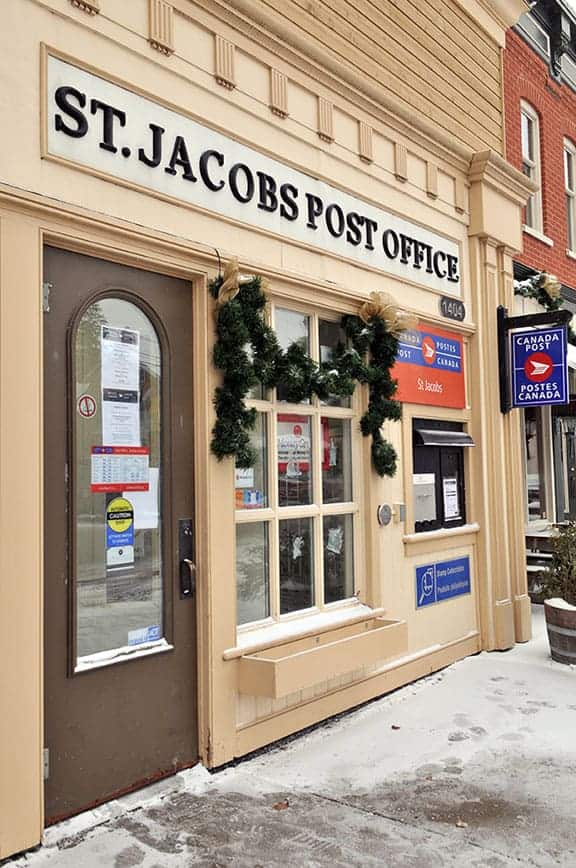Growth is inevitable in Breslau. How much, how soon and what it will look like are the outstanding questions as Woolwich Township maps out the village’s future.
The Breslau secondary plan will lay out appropriate locations for future residential and commercial growth inside the settlement boundaries, as well as places for schools, recreational facilities and the like. Transportation issues, including a proposed GO train station, are also part of the review, as are growth targets and staging of development, determining how many new homes should be built each year.
Now in the draft stage, the plan was the subject of a public meeting Tuesday night at the Breslau Community Centre, as some 100 people came out to discuss the document and what it means for the village.
Much of the growth addressed in the plan will come via a mixed-use (residential, commercial and industrial) development to the east of the village, expansion of a residential project at the south end, and new commercial development to the north, on the other side of Victoria Street. Developers for each of those projects were on hand to pitch their visions. Likewise, developers seeking inclusion in the planning area also made their cases, hoping to turn land into bankable projects.
Both Thomasfield Homes and Empire Communities, builders of subdivisions on the east and south sides of Breslau respectively, are looking to move forward with the next phases of their developments, each needing new lots to build on.
Empire Communities hopes to build 531 units – a mix of single-detached houses and townhomes – on a 77-acre parcel to the west of its existing Riverland subdivision. The development would be home to an anticipated 1,636 people, with employment land in the mix adding another 76 employees. The plan also includes three parks and space for a new elementary school.
In reviewing the draft of the secondary plan, Empire representative Stephen Armstrong said the company is worried about a proposed cap that would limit to 30 the number of homes that could be build in Breslau each year. Split with Thomasfield, that would allow only 15 new houses, meaning the subdivision could take more than three decades to build out.
The company, he said, would prefer to do that in five or six years instead.
“We believe that this community can grow,” he told township councillors gathered for this week’s public meeting.
“We’re ready to go.”
His concerns were echoed by Thomasfield Homes president Tom Krizsan, who argued the cap should be scrapped, or at least bumped up to a higher number.
“Fifteen homes a year just won’t do it,” he said of recouping the investment needed to get the development rolling, adding market demand should drive the pace.
“We have to match the market.”
Thomasfield’s latest bid for its eastside lands would bring 2,300 new residents and 3,330 jobs to the area. Proposed is a combination of residential (single-family, semis, townhouses and apartment buildings), commercial space, offices, retail stores, industrial uses, schools, open space, trails and wetlands extending over more than 335 acres east of the company’s current development, the Hopewell Heights subdivision. The development would cover two pieces of land, 226 acres immediately east of the subdivision and 109 acres east of Greenhouse Road, the site of much of the proposed industrial land. There would be 865 residential units; 53 acres of employment land; 15 acres set aside at the south end of the western property, adjacent to the CN rail line, set aside for a GO station; and substantial amounts of protected wetlands and extensive trailways.
One of those trying to get into the game, planner Paul Puopolo, representing Breslau Properties Ltd., called for the company’s lands in the Menno and Fountain street area to be part of the area slated for upcoming development. Growth there – he said the land was suitable for some 500 to 700 homes – would make more sense than moving east, with homes more easily integrated into the existing community as they would be within walking distance of amenities such as the school and commercial plaza.
He also suggested the township put the secondary plan on hold until the Region of Waterloo finalizes its official plan, currently tied up in legal challenges before the Ontario Municipal Board. After the ROP is in place, Breslau could be looked at in its entirety, rather than just the portion included in the secondary plan.
“The whole community should be planned, not just half,” he argued.
Concerns about the staging caps and the boundary lines struck a chord with Mayor Todd Cowan, who suggested those issues be looked at as the Breslau secondary plan review continues.
In that vein, Coun. Mark Bauman, noting that much of the meeting had been “developers jockeying for position,” said the township needs to hear from Breslau residents about imposing caps, adding similar staging was used in Elmira and St. Jacobs.
The residents should let council know whether it’s important to go slowly to allow for subdivisions to integrate into the community, rather than setting up quickly as their own little clusters, which he likened to development in the GTA.
The township will be seeking input as the secondary plan evolves, said director of engineering and planning Dan Kennaley.
The work, being carried out under a $235,000 contract awarded to The Planning Partnership, is expected to be largely completed by mid-2014. The final document will then be used to guide development in the village.









